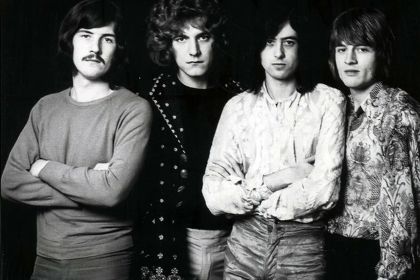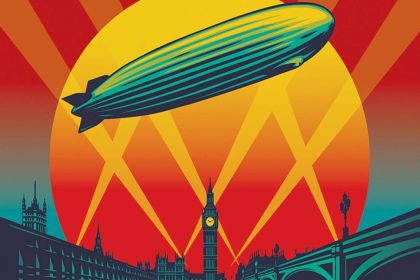HARP
The Celtic Baroque roots of Stairway to Heaven

Traditional Irish Music scorebook by Gráinne Hambly
Composer: Turlough O'Carolan
Irish musician Turlough O'Carolan (1670-1738) is considered to be a pioneer in blending court music of the Baroque era with the exquisite folk culture of his country. Having studied the harmonic progressions as well as the typical technique of varying short motifs, O'Carolan skillfully adapted this high-society style of music for the Celtic harp—a traditional instrument which has not lost its popularity.
O’Carolan, who lost his sight to smallpox at the age of 18, spent most of his life as a traveling harpist but gained fame as composer and songwriter. His virtuosity and brilliant experiments with harp music established a whole new genre—the Celtic Classics.
It is believed that O'Carolan composed over 200 Irish tunes that are still played today, firmly rooted in the national culture. Most of his compositions were not recorded during his lifetime, but his extensive traveling allowed his music to be collected with great accuracy and published long after his death, during the 18th and 19th century.
Here is Carolan's Dream performed by Patrick Ball who uses the old Irish wire-strung harp technique:
Most Led Zeppelin fans will probably notice the familiar notes of the famous Stairway to Heaven in this Celtic piece. For their timeless hit, the band used the same harmonic progression which sparks strong associations between the two works despite the fact that Led Zeppelin thoroughly revamped the motive itself.
The use of acoustic guitar in the Stairway to Heaven arrangement further enhances the similarity since the plucking technique of harpists is very similar to the sounds extracted from the guitar. The combination of acoustic and electric sections was one of Jimmy Page's favorite tricks which he himself referred to as “light and shade.”
It should be noted, that the band has always emphasized the influence of Celtic culture on their works.
As for the lawsuit against Jimmy Page and Robert Plant regarding the borrowing of the opening part of the Stairway to Heaven from the Taurus song written by the American band Spirit, it should be noted that the similarity of both pop songs to the mentioned piece of Irish harpist O'Carolan is obvious.
Since the Stairway to Heaven and Taurus cite the same harmonic progression used even by composers of the Baroque period, these pop songs should be considered variations on a theme. Сlassical music is teeming with examples of variations, though perhaps the most famous is a Portuguese dance La Folia that boasts contributions of more than 150 composers.




Excellent harp piece!
It's a Renaissance theme, passamezzo, but of course the opening melody is the same as Sonata di Chittarra, e Violino, con il suo Basso Continuo, which is Baroque. You can hear the piece here, https://www.youtube.com/watch?v=MYSFuWU7GQs
listen at 35 seconds into the video!
it is the perfect piece by Baroque guitarist Giovanni Battista Granata. indeed, the mentioned progression appears here while the melody resembles the Stairway to Heaven.
it was composed before O'Carolan.
do you have a link to that Renaissance theme, passamezzo?
There's an example in Wikipedia, on the page about Passamezzo Antico.
https://en.wikipedia.org/wiki/Passamezzo_antico
besides mass use in pop music, the progression piques interest due to its lack of a subdominant function.
... no idea is original when it comes to recorded/written music; similar minds think alike... even over several centuries.. and even more so with 12 note harmony.
the "original" composer should be flattered that an idea as such exists and is constantly being "reinvented".... after all the composition above was undoubtly derived from something earlier.... many Bach's family estate should sue everyone for using 12 tone equal temperment harmony! (LOL)